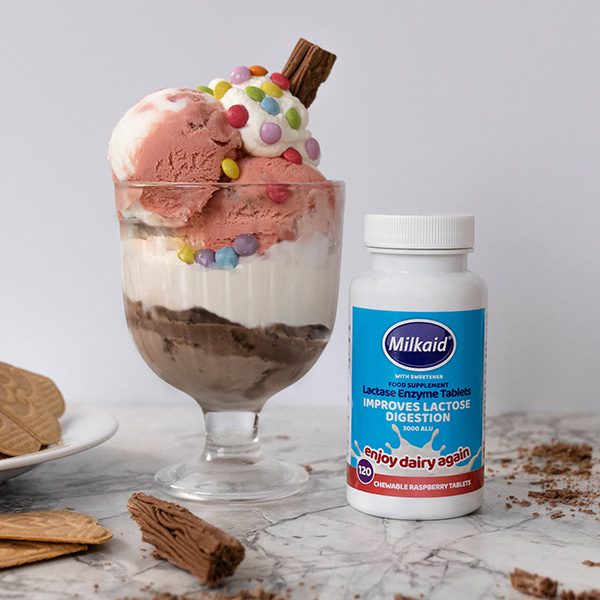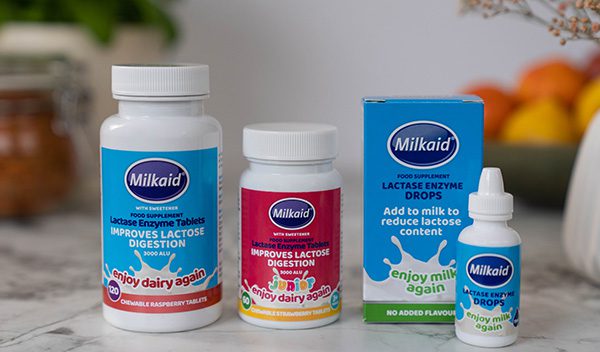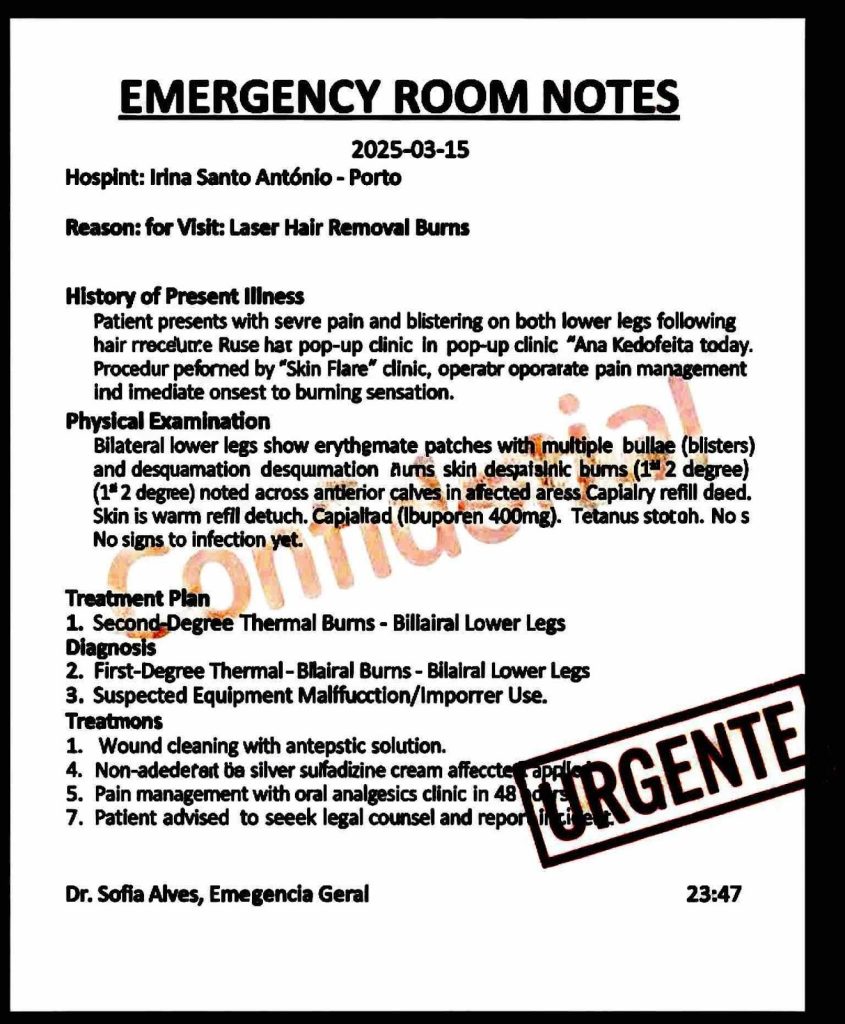Take control of lactose intolerance


For an estimated four million people in the UK, milk, ice cream and other dairy products are off the menu due to lactose intolerance.
This is unfortunate because milk and products such as cheese and yoghurt are packed with nutrients that are beneficial to our health. In particular, they’re great sources of protein and calcium. They also provide many other vitamins and minerals, including vitamin A, B vitamins, vitamin D, phosphorous and potassium.
Together, these nutrients contribute to keeping our muscles, bones, teeth, skin, vision and nervous system healthy. They’re especially helpful as we get older to ward off age-related conditions such as osteoporosis. This is of particular concern to women post-menopause, when hormonal changes lead to reduced bone density. Calcium is especially important for helping us maintain strong bones. And vitamin D is useful because it helps us absorb calcium from our food.
What is lactose intolerance?
It’s worth noting that lactose intolerance is not the same as a milk or dairy allergy. It’s a digestive problem caused by the body being unable to break down lactose.
Lactose is a sugar found in dairy foods, and to break it down, we need an enzyme called lactase. Most of us can produce all the lactase we need in the small intestine. For those who can’t, that’s when lactose intolerance becomes a problem.
The result can be unpleasant symptoms including bloating, stomach cramps, wind and diarrhoea. You can avoid these effects by cutting out dairy from your diet, but that can be very restrictive – especially if you enjoy eating out. It also means summer treats such as ice cream are strictly off-limits.
You can enjoy dairy again
The good news? It’s easy to top up the lactase in your system with Milkaid. Each raspberry-flavoured tablet contains a dose of 3000 ALU of lactase. This means chewing just one or two tablets immediately before consuming any food containing lactose should be enough to help you break it down.
Being so easy to take, Milkaid is ideal when you’re eating out. And because many children develop lactose intolerance before the age of 10, there’s also Milkaid Junior – strawberry flavoured tablets suitable for children aged 3 and over.
Alternatively, try Milkaid Drops – add three drops to 500ml of milk and refrigerate for 24 hours. It breaks down the lactose by up to 70%, so you can enjoy milk in your cup of tea or on your cereal without fear of unpleasant consequences. Or add 10 drops for up to 99% lactose reduction.
Milkaid contains no artificial flavours, gluten or yeast.

Find Milkaid in Holland & Barrett stores and online at hollandandbarrett.com. And find out more about the range at milkaid.com








